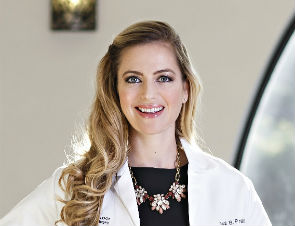As a resident in dermatology, one has made it through many critical achievements from MCAT scores to the STEP series, completing medical school to striving for that AOA class rank and finally matching into your next three years as a dermatology resident-in-training. Dermatology is a diverse field that requires an understanding of many subspecialties within its own training program. While the American Board of Dermatology (ABD) ensures adequate training and exposure for all Board-Certified Dermatologists completing an ACGME-approved residency program, an increasing number of physicians choose to pursue an additional one to two years of post-residency training. In 2014, 28.8% of graduating dermatology residents planned on additional training, according to the American Medical Association Residency and Fellowship Database.1 Post-residency training opportunities range from ACGME-approved fellowships in Dermatopathology, Pediatrics and Micrographic Surgery & Dermatologic Oncology; ASDS-approved fellowships in Cosmetic Dermatologic Surgery; and various institution-based fellowships in Medical Dermatology, Cutaneous Oncology, Rheumatology, Epidemiology and Contact Dermatitis.2
To Become an Expert
Fellowship allows the unique opportunity to pursue specific training in a formal environment with leaders in the field. This additional education allows one to better define his or her area of expertise and can often be further personalized to individual interests within the scope of the fellowship. “Fellowship allowed me the opportunity to focus on developing a niche (in hair and nail disorders) within academic medicine,“ stated Kristen LoSicco, MD, who completed the Advanced Medical Dermatology Fellowship at NYU under the guidance of Dr. Jo-Ann Latkowski.
To Have a Broad Support Network
Investing an additional year in your education is an opportunity to groom wisdom from key mentors and create a deeper knowledge base in a particular skill. “Fellowship offers the unique opportunity of one-on-one mentorship and provides the hands-on experience necessary to develop and grow a highly-specialized skill set,” states Vitaly Terushkin, MD, a fellow of Zitelli and Brodland Skin Cancer Center for Micrographic Surgery and Dermatology Oncology. The mentorship cultivated during fellowship promotes personal and professional growth. These relationships help shape careers and often allow for increased opportunity to be involved in professional societies.
Many influences factor into the decision-making process of pursuing a fellowship: relationships, family, available opportunities, geography and academic interest… to name a few. Although, debt does not appear to be a factor in physicians pursuing non-procedural fellowships.3 Post-residency fellowships offer a higher level of focused education to apply specific skills in clinical practice. It also equips physicians with additional resources for pursuing careers in research and education. A recent study demonstrated that fellowship-trained dermatologists had a higher level of scholarly productivity when compared to non-fellowship trained dermatologists in an academic setting.4 Overall, this investment of additional training can open the door to new opportunities, mentors and ultimately shape one’s career.
1. American Medical Association. FREIDA Online. https://freida.ama-assn.org/Freida/user/specStatisticsSearch.do?method=viewGraduates&pageNumber=3&spcCd=080. Accessed May 28, 2016.
2. Park KK. Fellowships after dermatology residency: the traditional and beyond. Cutis. 2015;95:E31-34.
3. Javorsky E,Kostecki J, Kimball AB. The relative popularity of nonprocedural dermatology fellowships. J Am Acad Dermatol. 2012:66:693-4.
4. John AM, Gupta AB, John ES, Lopez SA, Lee B, and Lambert WC. The Impact of Fellowship Training on Scholarly Productivity in Academic Dermatology. Cutis. 2016;97:353-8.

